A few decades ago, aeromodelling and drones were just an expensive hobby for a small number of enthusiasts. But the fierce competition provided a significant reduction in their prices and expanded their capabilities due to improvement of motors, batteries, cameras, etc.
In addition, first-person view (FPV) technology became an additional powerful impetus for their development. As known, it provides wireless data transmission from the on-board quadcopter camera to FPV goggles or a displey in real time.
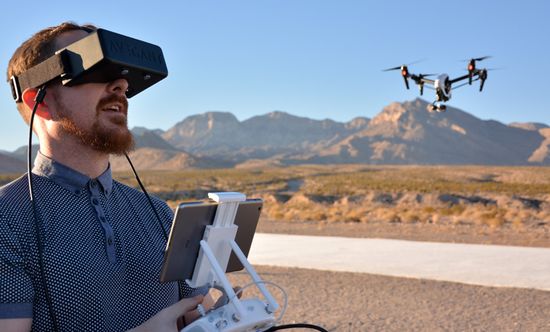
FPV very accurately mimics the feeling of a real pilot in the cockpit, allowing people to enjoy the thrill of flying. As a result, drones have become one of the fastest growing areas in the consumer electronics segment.
But choosing a drone with balanced specs of all components requires some knowledge.
Of course, communication range is one of the main specs of an FPV drone, which directly depends on the VTX (video transmitter) power and antenna gain. But a more powerful VTX has a higher power consumption. Unfortunately, the increase in the number of batteries increases weight and dimensions of the drone, decreasing the duration and distance of its flight. In the same time, the antenna can increase the signal transmission range by approximately tenfold and is the most common way to solve this problem in modern drones. The antenna gain (“G”) is its main parameter and is measured in decibels-isotropic (dBi). It characterizes the ratio between the real antenna and a perfectly isotropic antenna at the same powers.
Today companies are developing Low Range FPV with low power VTX and Long Range FPV with more powerful transmitters.
Polarization
By design, antennas are divided into cloverleaf and helical antennas. The cloverleaf antenna provides max radiation perpendicular to the antenna axis and min – in axial direction.
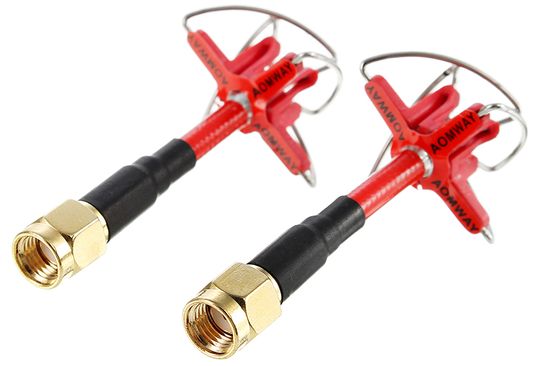
Helical antenna provides maximum range with a tighter focus compared to omni or patch style antenna.
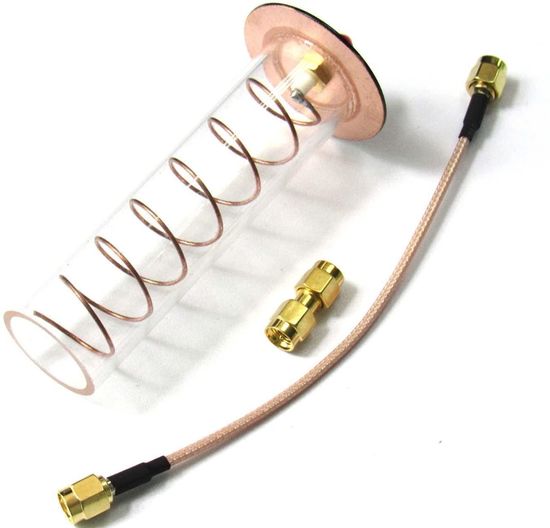
What is important, it has a maximum gain across the entire 5.8GHz band.
But the classification by polarization is more widespread. According to this criterion, antennas are divided into:
– linear polarized directional antenna;
– linear polarized omni directional antenna;
– circular polarized directional antenna;
– circular polarized omni directional antenna.
Linear antenna works only in one plane, has a low price, minimal size and long propagation distance due to the concentration of energy in one plane. But stable communication requires parallelism of the onboard antenna with the ground antenna on the remote control or goggles. Of course, this requirement is practically impracticable during flight due to the roll, pitch and yaw of the quadcopter.
Circular polarized antennas are classified as left-hand (LHCP) or right-hand (RHCP). Of course, VTX and receiver need to use matching antennas to prevent signal loss.
As known, high frequency antennas of 2.4GHz or 5.8GHz are sensitive to multi-path video interference due to the RF signal reflection. But circular polarization is more resistant to interference.
In general, circular polarization is more effective when flying close to large objects or in an enclosed environment, or for acrobatic flying with frequent and instantaneous orientation and angle changes, or on the low altitude flying.
A small, cheap and durability antenna with linear polarization is ideal for long distance flying without too much roll or pitch and without any large obstacles.
Placement
As the name suggests, an omnidirectional antenna is equally effective in all directions, and the directional antenna uses a narrow beam. Therefore, the omni antenna provides filming regardless of the flight drone direction.
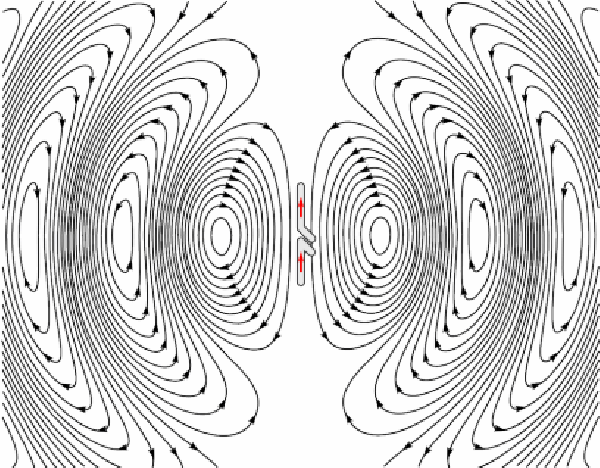
Directional antenna provides filming only in the flight direction. On the other hand, it concentrates power in a narrow beam, increasing the viewing range.
Antenna placement also affects the its efficiency. For example, increasing the distance between the VTX antenna, radio system antenna and GPS receiver antenna will reduce their mutual interference. Also, the transmitter and receiver on the drone should not be placed on the same line. In addition, the metal drone body can also block video transmission.
Of course, this hardly matters for the expensive DJI Mavic 2 Zoom or DJI Mavic Pro 2 with 7-8km range. But it can be a good solution for extending the communication range in budget models. In general, choosing the FPV drone antenna depend on its frequency, direction and polarization. In addition, its performance also depends on placement.
Most drones with 2.4GHz receiver use two linear antennas. Their placement at 90° right angles to each other is optimal.
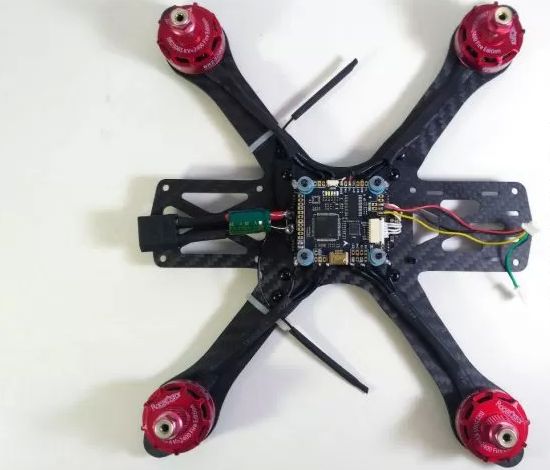
The V-shaped placement of antennas at the tail of the drone is also very effective.
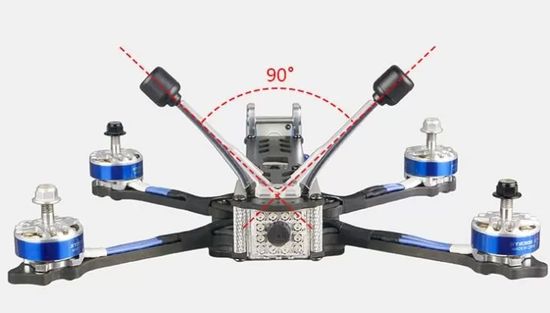
The 5.8GHz VTX antenna mounts perpendicular to the camera axis. Its axis is always directed vertically when flying forward.
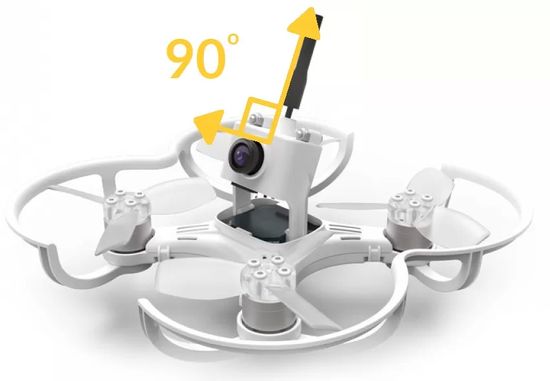
This angle is ideal for linear and circularly polarized antennas.
Most modern quadcopters use 200-400mW VTX without additional cooling. Models of 600 mW and above are forced to use radiators or even fans to dissipate heat.
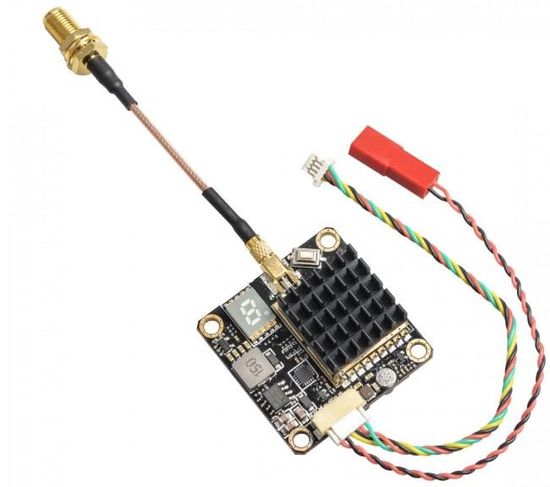
But increasing its power increases the level of radio noise, which is undesirable due to the lack of shielding for the drone electronics.
Conclusion
Of course, the format of the article does not cover all aspects of choosing the optimal antennas for FPV drones. It only demonstrates some of the nuances in solving this problem.
First of all, the selection criteria depend on the use of the drone. In particular, this factor directly affects the choice of VTX power. In addition, the placement of antennas on the drone also significantly affects their efficiency. However, today the Internet offers a huge amount of materials on this topic.
This video offers an overview of different FPV drone antennas.
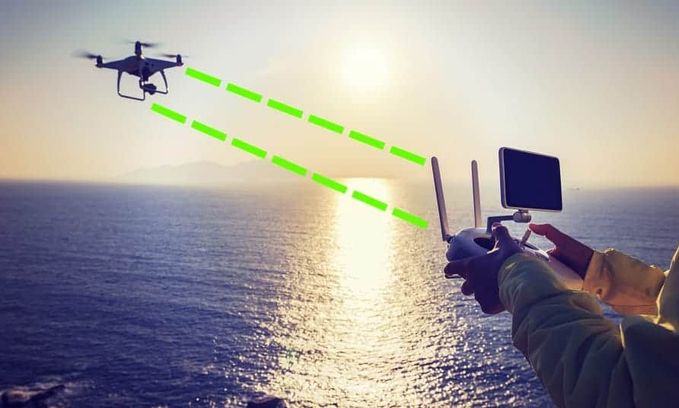
Pingback: FPV drone Review - The Appliances Reviews
Pingback: Drone camera Review - The Appliances Reviews
Pingback: How to choose the best quadcopter Review - The Appliances Reviews
Pingback: Mid-tier mini drones Review - The Appliances Reviews